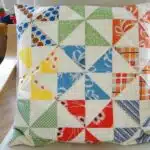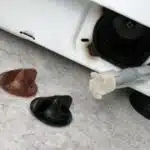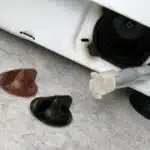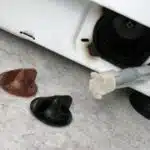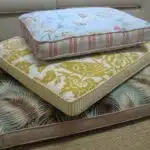As a home cleaning and care expert, I understand the importance of maintaining a clean and healthy living environment. One often overlooked aspect of this is pillow care. Pillows are an essential part of our daily lives, providing us with comfort and support while we sleep. However, they can also be breeding grounds for bacteria, dust mites, and allergens if not properly cared for.
In this article, we will discuss the proper way to wash and care for pillows. We will cover different types of pillows, their materials, and how to maintain them to prolong their lifespan while ensuring that they are kept hygienic. By following these simple steps, you can improve your quality of sleep while promoting a healthier living environment for yourself and those around you.
Why Proper Pillow Care Is Important
Importance of Proper Pillow Care
Proper pillow care is essential in maintaining the quality and longevity of your pillows. It is not enough to simply change pillowcases or fluff them up every morning. By properly washing and caring for your pillows, you can avoid build-up of dirt, bacteria, allergens, and dust mites that can cause respiratory problems, skin irritation, and other health issues.
Aside from the health benefits, proper pillow care also ensures that your pillows remain fluffy, comfortable, and supportive. Over time, pillows can lose their shape due to moisture absorption or constant pressure from our heads. Regular maintenance through washing and fluffing will help keep them in top condition for a longer period.
In addition to personal comfort and health benefits, proper pillow care also helps save on costs by prolonging the life of your pillows. With regular cleaning and maintenance, you won’t have to replace your pillows as often since they remain in good condition. This means fewer expenses for purchasing new ones and less waste in landfills.
Moving forward to the next section about types of pillows and materials used…
Types Of Pillows And Materials
- Down pillows are filled with feathers and provide a soft, comfortable cushioning. Memory foam pillows are composed of a dense, visco-elastic material that conforms to the shape of the head and neck for support. Cotton pillows are breathable, allowing for air circulation and a cool sleeping surface, while wool pillows offer a plush, firm sleeping surface. Latex pillows are made from natural latex rubber, providing a firm yet springy sleeping surface.
Down Pillows
Down pillows are a popular choice for many people due to their luxurious softness and comfort. However, cleaning and maintaining them properly can be challenging. To keep your down pillows in top condition, it is important to follow the correct washing and fluffing techniques.
When washing down pillows, it is essential to use a gentle detergent and avoid using fabric softeners or bleach, which can damage the filling. It is also advisable to wash two pillows at a time to balance the load in the machine. After washing, drying should be done on low heat with tennis balls or dryer balls to help fluff up the filling.
Fluffing techniques are vital in maintaining the shape and comfort of down pillows. Regularly fluffing your pillow by hand or using a special pillow fluffer will help redistribute the filling evenly throughout the pillow. Additionally, choosing high-quality filling options such as goose down can greatly increase longevity and reduce clumping.
In conclusion, proper care and maintenance of down pillows require careful consideration of both washing techniques and filling options. Following these tips will ensure that your down pillows remain fluffy, comfortable, and long-lasting for years to come.
Memory Foam Pillows
Moving on to another popular type of pillow, we have memory foam pillows. Memory foam has gained popularity in recent years due to its unique properties that provide a comfortable and supportive sleep experience. Memory foam pillows offer benefits such as pressure relief, spinal alignment, and improved airflow. Unlike down pillows, choosing the right memory foam pillow requires consideration of factors such as density, firmness, and thickness.
Memory foam pillow benefits include its ability to contour to your head and neck shape, providing a customized sleeping experience. This can help alleviate pain and stiffness in the neck and shoulders by keeping the spine aligned throughout the night. Additionally, memory foam is hypoallergenic and resistant to dust mites, making it an ideal choice for those with allergies or asthma.
Choosing the right memory foam pillow involves taking into account various factors such as your preferred sleeping position and body type. For side sleepers or those with broader shoulders, a firmer and thicker pillow may be more suitable. Back sleepers may prefer a medium-firm density to support their neck while maintaining a neutral spine position. It is also important to consider the material’s quality and durability when selecting a memory foam pillow for long-lasting comfort.
How Often Should You Wash Your Pillows
Like a car that needs regular oil changes to function properly, pillows require routine washing to maintain their cleanliness and quality. The frequency of washing your pillows depends on several factors, including the type of pillow and how frequently it is used. As a general rule, most experts recommend washing your pillows every six months to one year.
However, if you suffer from allergies or asthma, you may need to wash your pillows more frequently. According to pillow sanitation standards, pillows should be washed every three to six months if you have allergies or asthma. This is because dust mites, bacteria, and other allergens can accumulate in your pillow over time, causing respiratory problems or allergy flare-ups.
To ensure that your pillows last longer and remain hygienic, it is essential to follow proper washing instructions. Most pillows can be washed in the machine on a gentle cycle with mild detergent. Be sure to remove any stains before placing them in the washer and use a low heat setting when drying them. Avoid using fabric softeners or bleach as they can damage the filling material and reduce the lifespan of your pillow.
With proper care and maintenance, you can ensure that your pillows provide optimal comfort and support for years to come. However, it’s crucial to recognize the signs that indicate when it’s time for a wash. In the next section of this article, we’ll discuss some tell-tale signs that suggest your pillows need cleaning so you can take action before they become unsanitary or cause discomfort during sleep.
Signs That Your Pillows Need To Be Washed
After understanding how often you should wash your pillows, it’s important to know when they need washing. Signs of pillow wear and tear include discoloration, foul odors, and the loss of shape or fluffiness. If you fold your pillow in half and it doesn’t spring back into shape, it may be time for a wash.
Maintaining good pillow hygiene is crucial for a good night’s sleep. Not only can dirty pillows cause skin irritation and allergies, but they can also harbor dust mites, bacteria, and fungi. These allergens can lead to respiratory problems or other health issues. Therefore, it’s essential to wash your pillows regularly.
To prepare your pillows for washing, begin by removing any pillowcases or covers. Check the care label on the pillow to see if it’s machine washable or if hand washing is recommended. Down-filled pillows typically require special care such as dry cleaning or professional cleaning services. Once you’ve determined the appropriate method for washing your pillows, ensure that you use a mild detergent and avoid using fabric softeners as these can leave a residue that attracts dirt and bacteria.
Transition: Now that we’ve identified signs that indicate when it’s time to wash your pillows and emphasized the importance of maintaining good pillow hygiene let’s dive into preparing your pillows for washing.
Preparing Pillows For Washing
Before washing your pillows, it is important to prepare them properly. First, determine the type of stuffing in your pillow. Pillows can be filled with a variety of materials such as down feathers, synthetic fibers or memory foam. Each type of stuffing requires different care and cleaning methods to prevent damage.
Next, inspect your pillows for any stains or spots that need pre-treating. Use a stain remover or spot cleaner appropriate for the type of fabric covering your pillow. Be sure to follow the instructions carefully and test the product on a small, inconspicuous area first to avoid discoloration or damage.
Finally, fluff up your pillows before placing them in the washing machine to ensure they are evenly cleaned. This will also help prevent clumping during the wash cycle. By taking these steps before washing your pillows, you will help ensure that they are properly cleaned and maintained for long-lasting use.
Transitioning into washing pillows in a washing machine, it is important to note that not all types of pillows can be washed this way. Follow our guide on how to choose the correct settings and detergent when machine-washing your pillows to keep them fresh and clean without causing damage.
Washing Pillows In A Washing Machine
- To properly clean pillows in a washing machine, the user should select a gentle cycle, cold water, and a mild detergent.
- It is important to check the care labels on the pillows to ensure the washing machine settings do not exceed the manufacturer’s recommendations.
- The user can place two or three pillows in the washing machine at a time, ensuring the load is not too heavy or unbalanced.
- When loading pillows into the machine, it is important to evenly distribute the load to avoid damage to the washing machine.
Setting The Washing Machine
When it comes to washing pillows in a washing machine, one of the most important steps is setting the washing machine correctly. Before tossing your pillows into the machine, take a moment to adjust the settings based on the type of pillow you have. Most pillows can be washed using a regular or delicate cycle, but some may require special attention.
One important setting to consider when washing pillows is water temperature. Depending on the type of pillow you have, you may need to use hot or cold water. For example, if you have down or feather pillows, it’s best to use warm water to avoid damaging the filling. On the other hand, if you have synthetic pillows, cold water is usually sufficient.
Adjusting settings and water temperature may seem like small details when washing pillows, but they can make a big difference in how clean and fresh your pillows come out of the wash. By taking these factors into account and making adjustments as needed, you can help ensure that your pillows are properly cleaned and cared for.
Loading Pillows Into The Machine
When it comes to washing pillows in a washing machine, many people tend to make mistakes that can damage the pillows. One of the most crucial steps is loading the pillows into the machine correctly. Failure to do so can result in lumpy, misshapen, or even torn pillows. Therefore, it’s important to know how to load your pillows correctly.
Firstly, when loading your pillows into the machine, ensure that you only wash two at a time. This prevents overcrowding and allows for effective cleaning. Overcrowding can lead to uneven distribution of water and detergent, causing some parts of the pillow to be under-cleaned while others are over-cleaned.
Secondly, avoid washing your pillows with heavy fabrics such as towels or jeans. These heavy fabrics can cause abrasion against the pillow fabric or filling, leading to damage. Instead, wash them with lightweight fabrics such as sheets or other pillowcases.
In conclusion, taking care when loading your pillows into the washing machine is crucial for their longevity and cleanliness. By avoiding common washing mistakes such as overcrowding and mixing with heavy fabrics, you can ensure that your pillows come out of the wash looking fresh and clean while maintaining their shape and quality.
Handwashing Pillows
Handwashing pillows is an alternative to tossing them in the washing machine. One of the benefits of handwashing pillows is that it can extend their lifespan. Washing machines can be tough on pillows, causing the filling to clump or break down, resulting in a lumpy pillow. Handwashing allows you to control the water temperature and agitation, avoiding any damage to your precious pillows.
To handwash your pillows, start by filling a large sink or bathtub with lukewarm water and add a mild detergent. Submerge the pillow and gently agitate it for a few minutes, making sure all areas are covered. Avoid twisting or wringing the pillow as this can damage the filling. Rinse thoroughly with clean water until there are no suds left.
Alternatives to handwashing include spot cleaning and dry cleaning. Spot cleaning may be useful if you only have small stains on your pillow. Use a mild detergent and gently scrub the area with a soft-bristled brush before rinsing with clean water. Dry cleaning is another option; however, it can be expensive and not suitable for all types of pillows. Check the care label before deciding which method to use.
Now that you know how to handwash your pillows let’s move on to how to dry them properly.
Drying Pillows
After handwashing your pillows, it’s time to dry them properly. Avoid using the dryer as it can damage the filling and shrink the fabric. Instead, opt for air fluffing or laying them flat on a clean surface under direct sunlight.
Air fluffing involves placing your pillows in a dryer on a no-heat or low-heat setting. Add a couple of tennis balls in the dryer to help fluff the pillows and prevent clumping of the filling. Check the pillows every 30 minutes until they are completely dry.
Another method is laying your pillows flat on a clean surface outside under direct sunlight. This method may take longer but is gentler on the fabric and filling. Remember to flip them over occasionally to ensure both sides are evenly dried. Now that you know how to dry your pillows, let’s move onto tips for fluffing them up!
Transition: “Now that your pillows are fully dried, it’s time to make sure they’re nice and fluffy. Here are some tips for fluffing your pillows.” 4. Tip the pillows on their sides and fluff them up gently by punching them in the center. This will distribute the filling evenly, and your pillows will be fluffier than ever.
Tips For Fluffing Pillows
Tip-toeing around the house is a common routine when you have to fluff your pillows every day. Fluffing techniques are essential for maintaining the shape, softness, and support of pillows. With regular use, pillows tend to lose their firmness and become flat. Here are some tips for fluffing pillows to keep them in top condition.
Firstly, rotate your pillow regularly from one end to another or flip it over. By doing this, you can avoid putting pressure on one side of the pillow and help distribute its fillings evenly. Secondly, punch your pillow gently from the opposite ends with both hands several times to make them plump again. Alternatively, you can also beat your pillow against a hard surface like a wall or floor to achieve better results. Lastly, knead and squeeze the pillow’s filling by pressing down on it repeatedly with your fingers. This technique helps break up any lumps inside and loosens the fillings.
Pillow maintenance is crucial not only for keeping them fluffy but also for preventing allergens from accumulating inside. You should wash your pillowcases weekly, but how often should you clean your actual pillows? The general rule of thumb is to wash them twice a year or every six months. However, if you suffer from allergies or respiratory problems, washing them more often may be necessary.
In conclusion, fluffing pillows is an excellent way of preserving their quality and making sure that they last longer than usual. Pillow maintenance requires diligence, attention to detail, and patience. Follow these tips for fluffing pillows so that they remain soft and comfortable throughout their lifetime. In the next section, we will discuss how to store pillows correctly so that they stay fresh when not in use.
How To Store Pillows
- Storing pillows long-term requires them to be placed in a cool, dry and dark place to prevent mold and mildew growth.
- Pillows should be replaced every 3-5 years to maintain comfort and support, and should be stored in an airtight container or bag when not in use.
- Short-term storage of pillows should involve washing them regularly to remove dust, dirt, and allergens, and drying them completely.
- Ensure that all pillows are kept away from direct sunlight to prevent fading and discoloration.
Storing Pillows Long-Term
When it comes to storing pillows long-term, it is important to follow best practices to ensure that they remain clean and fresh. First and foremost, it is recommended to wash the pillows before storing them. This will remove any dirt, oils, or sweat that may have accumulated over time. Once the pillows are washed and completely dry, they should be placed in a breathable storage container such as a cotton pillowcase or linen bag.
In addition to washing and using breathable containers, there are also creative ideas for pillow storage solutions. One option is to use vacuum-sealed bags that compress the pillows and minimize their size for easy storage. Another idea is to repurpose old suitcases or trunks as decorative storage solutions for pillows. However, it is important to note that regardless of the storage method chosen, the environment should be cool, dry, and free from moisture.
Overall, implementing good practices when storing pillows ensures their longevity and freshness for future use. It is always best to wash the pillows before storing them and then place them in a breathable container or utilize one of the many creative storage solutions available. By taking these simple steps, you can ensure your pillows remain clean and ready for use whenever you need them without any musty odors or stains lurking about.
Storing Pillows Short-Term
Storing pillows short-term is important to keep them clean and fresh between uses. One of the best ways to store pillows for a short period is by using vacuum-sealed bags. These bags are designed to compress the pillows, reducing their size for easy storage without compromising their fluffiness. Vacuum sealing also helps prevent dirt, dust, and moisture from entering the bag, keeping the pillows hygienic.
Another way to store pillows short-term is by organizing them in your linen closet. You can use pillowcases or linen bags to keep them protected and separated from other linens. This method not only keeps your pillows clean but also helps you stay organized, making it easier to find what you need when you need it.
In conclusion, storing pillows short-term requires proper care and attention just like long-term storage. By using vacuum-sealed bags or organizing your linen closet, you can ensure that your pillows remain clean and fresh until the next use. Remember to always wash your pillows before storing them and keep them in a cool and dry environment. With these simple steps, you can enjoy a comfortable and relaxing sleep every night without worrying about musty odors or stains on your beloved pillows.
Emergency Pillow Cleaning Tips
When it comes to pillows, accidents can happen. Whether it’s a spilled drink or an unexpected nosebleed, sometimes pillows need emergency cleaning. Luckily, there are a few quick fixes for dirty pillows that can help in these situations.
One of the most important things to have on hand for emergency pillow cleaning is the proper supplies. A good stain remover and some white vinegar can go a long way in removing stains and odors from your pillows. Additionally, having some spare pillowcases available can help protect your pillows from future spills or stains.
If you need to clean your pillow in a hurry, there are a few methods you can try. For light stains or odors, simply spot clean with a damp cloth and mild detergent. For more stubborn stains or odors, try spraying the affected area with white vinegar and letting it sit for 15-20 minutes before washing as usual. Just be sure to check the care label on your pillow before attempting any cleaning methods to avoid damaging the filling or cover.
Transition: While emergency cleaning tips can be helpful in a pinch, prevention is always better than cure when it comes to keeping your pillows clean and fresh. In the next section, we’ll take a look at how to remove stains from pillows using more thorough methods that will help keep your pillows looking and smelling like new for years to come.
How To Remove Stains From Pillows
Oil-based stains can be removed from pillows by using a pre-treatment product designed for removing oil-based stains. Protein-based stains can be removed by using a cleaning solution that contains enzymes and warm water. Ink stains can be removed by blotting the stain with a cloth dampened with rubbing alcohol. Additionally, a mixture of detergent, vinegar, and warm water can be applied to the stain and allowed to sit for at least 15 minutes. Afterward, the pillow should be rinsed with cool water and air-dried. It is recommended to spot-test the cleaning solution on a small area of the pillow before use to ensure there is no discoloration or damage to the fabric.
Removing Oil-Based Stains
Removing oil-based stains from pillows can be a challenge, but it is not impossible. The key to effective stain removal is to act fast and use the right products. One of the most effective stain removers for oil-based stains is dishwashing detergent. Apply a small amount of dishwashing detergent onto the stained area and let it sit for 10-15 minutes before washing the pillow as normal.
Another effective method for removing oil-based stains from pillows is using rubbing alcohol or vinegar. Both products have strong degreasing properties that can break down the oils in the stain. To use this method, apply a small amount of rubbing alcohol or vinegar onto the stained area using a clean cloth or sponge. Let it sit for 10-15 minutes before washing the pillow as normal.
If all else fails, consider using a commercial stain remover specifically designed for oil-based stains. Be sure to read and follow the instructions carefully to ensure safe and effective use of the product. With these tips, you can keep your pillows looking clean and fresh while prolonging their lifespan. Remember, taking care of your bedding is an essential part of maintaining a clean and healthy home environment!
Removing Protein-Based Stains
When it comes to keeping your pillows clean, knowing how to remove stains is essential. One type of stain that many people struggle with is protein-based stains, which can include sweat, blood, and other bodily fluids. These types of stains can be particularly stubborn and unpleasant, but there are several effective methods for removing them.
One popular method for removing protein-based stains from pillows is to use enzyme-based cleaners. These products contain special enzymes that break down the proteins in the stain, making it easier to remove. To use this method, simply apply a small amount of the cleaner directly onto the stained area and let it sit for 10-15 minutes before washing as normal.
Another effective pillow cleaning hack for removing protein-based stains is to use hydrogen peroxide. This substance has powerful bleaching properties that can help lift even the toughest stains. To use this method, mix equal parts hydrogen peroxide and water in a spray bottle and spray onto the stained area. Let it sit for 5-10 minutes before washing as normal.
By using these methods for protein stain removal, you can keep your pillows looking clean and fresh for longer. Remember to always follow the instructions carefully when using cleaning products and test on a small, inconspicuous area first to ensure compatibility with your pillow’s material. With a little effort and know-how, you can maintain a healthy and hygienic home environment!
Removing Ink Stains
When it comes to maintaining the cleanliness of your pillows, it is important to know how to remove different types of stains. One common type of stain that can be particularly stubborn is ink stains. Ink stains can come from a variety of sources, such as pens, markers, or printer ink. If not addressed promptly and correctly, these stains can set in and become more difficult to remove.
To effectively remove ink stains from pillows, begin by blotting up as much of the ink as possible with a clean cloth or paper towel. Avoid rubbing the stain, as this may cause it to spread further into the fabric. Once you have removed as much ink as possible, apply a small amount of rubbing alcohol directly onto the stain and let it sit for several minutes before washing as usual.
Preventing yellowing is also an important part of maintaining the appearance and cleanliness of pillows. One way to prevent yellowing is to avoid exposing pillows to sunlight or other sources of direct heat for extended periods of time. Additionally, using pillow protectors or pillowcases made from materials such as silk or satin can help reduce friction and prevent skin oils and sweat from seeping into the fabric, which can also contribute to yellowing over time.
By following these tips for removing ink stains and preventing yellowing on your pillows, you can ensure that they look clean and fresh for longer. Remember that prevention is key when it comes to maintaining an attractive home environment – taking proactive steps now will save you time and effort down the line!
Tips For Maintaining Pillows Between Washings
After removing stains from pillows, it is important to take measures for pillow maintenance in between washes. Even with regular washing, pillows can accumulate dust mites, dead skin cells, and other debris that can cause allergies and respiratory problems. Therefore, it is recommended to fluff pillows daily to help redistribute the fillings and prevent clumping.
Another tip for maintaining pillows between washings is to use pillow protectors. These covers act as a barrier against sweat, oil, and other substances that can penetrate the pillowcase and affect the pillow’s cleanliness. Pillow protectors are machine washable and should be washed every one or two weeks along with the sheets to maintain their effectiveness.
To keep pillows smelling fresh, it is advisable to place them outside in direct sunlight for a few hours once a month. Sunlight helps kill bacteria and remove moisture that can cause musty odors in pillows. Alternatively, you can add a few drops of essential oils such as lavender or peppermint to a spray bottle filled with water and spritz lightly on the pillow surface before fluffing them up.
Maintaining pillows properly not only extends their lifespan but also enhances your sleep quality by providing better support and hygiene. In the next section, we will discuss more benefits of proper pillow care and how it contributes to overall health and well-being.
Benefits Of Proper Pillow Care
Proper pillow care is not just about keeping your pillows clean, but also about ensuring that they remain comfortable and supportive. The benefits of proper pillow care are numerous, including improved sleep quality and enhanced overall health. By taking the time to care for your pillows properly, you can enjoy a more restful and rejuvenating night’s sleep.
One of the most important benefits of proper pillow care is that it helps to prevent the accumulation of dust mites, allergens, and other irritants that can trigger allergies or respiratory problems. Pillowcases should be washed at least once a week in hot water to kill any bacteria or allergens that may be lurking on them. Additionally, pillows should be fluffed and aired out regularly to help keep them fresh.
Another benefit of proper pillow care is that it can help extend the life of your pillows. Pillows that are not cared for properly will begin to lose their shape and support over time, leading to discomfort and poor sleep quality. By washing pillows according to manufacturer’s instructions and using protective covers, you can help ensure that they stay clean and comfortable for years to come.
Moving forward with proper pillow care is an investment in your health and well-being. Not only does it improve your sleeping experience but also extends the life of your bedding. To get started with improving your pillow hygiene routine read on for some frequently asked questions about pillow care.
Frequently Asked Questions About Pillow Care
Pillow Storage:
When it comes to pillow storage, it’s important to keep them in a dry and cool place. Avoid storing them in areas that are prone to moisture, such as basements or attics. Instead, opt for a closet or cabinet with good ventilation. Additionally, avoid overcrowding your storage space so that the pillows can breathe properly. If you need to store your pillows for an extended period of time, consider using vacuum-sealed bags to protect them from dust and dirt.
Emergency Cleaning Tips:
Spills and accidents happen, and when they do, it’s important to act quickly to prevent permanent damage. For liquid spills on pillows with removable covers, remove the cover immediately and wash it according to the care instructions. Blot any excess liquid from the pillow itself with a clean towel or cloth, then use a mild detergent solution to gently spot-clean the affected area. Avoid using too much water as this can cause mold growth.
For non-removable cover pillows or those made of down or feathers, spot cleaning may not be possible. In these cases, place a clean towel or cloth over the affected area and gently press down to absorb as much liquid as possible. Then, take the pillow to a professional cleaner who specializes in bedding items.
In summary,
Proper pillow storage is essential for maintaining their quality over time. Keep them in a dry and cool location with good ventilation and avoid overcrowding your storage space. In case of spills and accidents on your pillows, act quickly by removing any covers and spot-cleaning with gentle detergent solutions where possible. For difficult-to-clean pillows, seek professional cleaners’ services specialized in bedding items’ cleaning for effective results.
Conclusion
Proper pillow care is crucial for maintaining good sleep hygiene and extending the life of your pillows. Different types of pillows require different cleaning methods, and neglecting them can cause allergies, infections, and unpleasant odors. We can’t stress enough the importance of regularly washing your pillows.
It’s not uncommon to find that your pillows need a wash when they start looking yellow or smelling bad. But don’t wait for these signs before you take action! Ideally, you should wash your pillows every three months. This may seem like a lot of work, but it’s worth it when you consider the benefits: no more bacteria breeding on your pillowcase, fewer allergens in the air, and better sleep quality.
When preparing your pillows for washing, make sure to read the care label first. Some materials cannot withstand high temperatures or drying cycles. Remove any stains using a mild detergent or vinegar solution before tossing them into the machine. After washing, dry them thoroughly on low heat or air-dry them outside. Avoid using fabric softeners as they can damage pillow fibers.
If you think that washing your pillows is too much hassle, think again! Proper pillow care will save you money in the long run by preventing premature wear and tear. It also ensures that your sleeping environment remains clean and healthy for you and your family. So next time someone tells you that cleaning is a chore, remind them that it’s an investment in their well-being!
Image Credits
- “Pillow Talk Swap round 10” by lindakl (featured)


